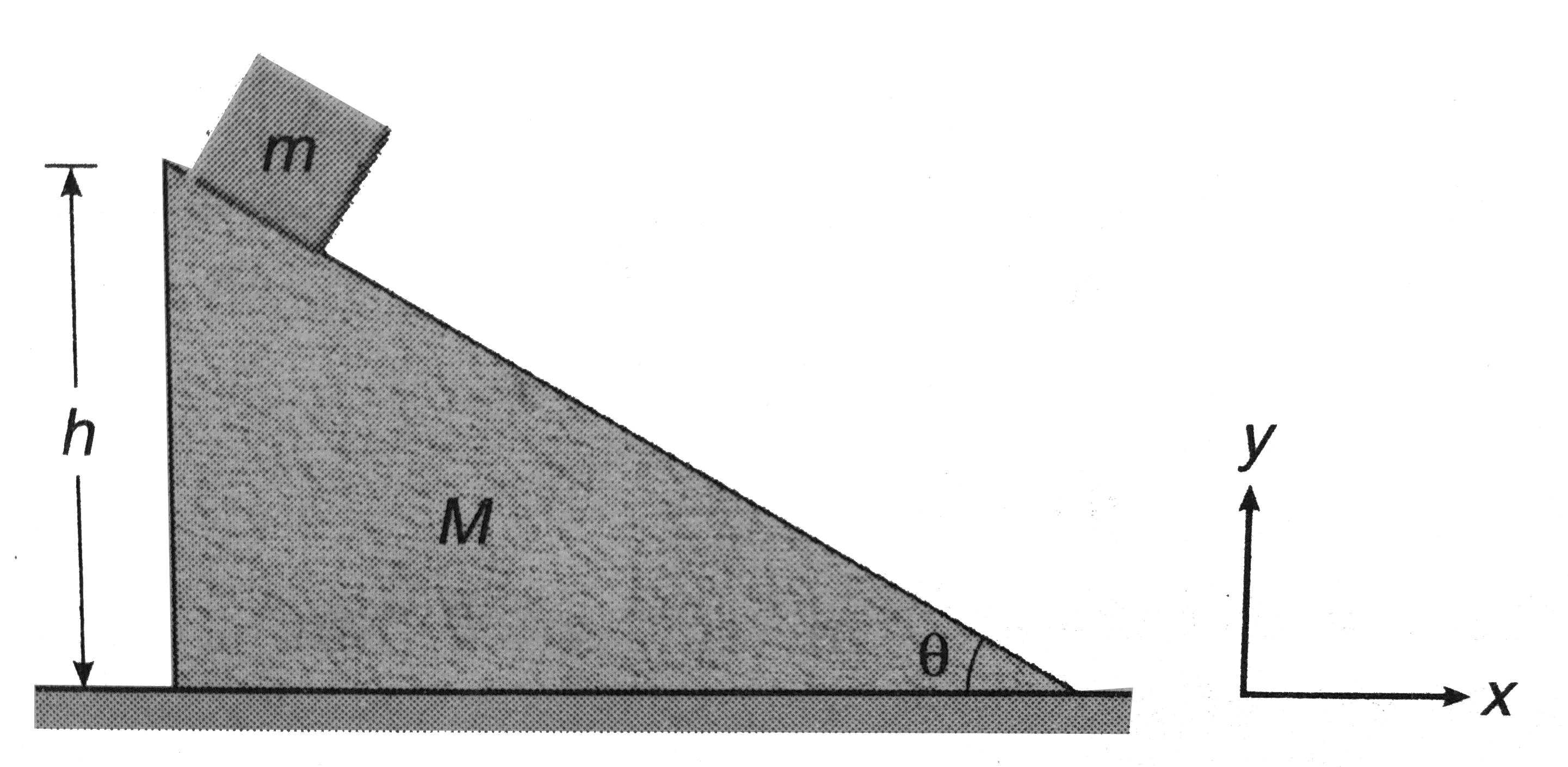All surfaces are smooth. Find the horizontal displacements of the block and wedge when the block slides down from top to bottom.

When the block slides down on the smooth wedge, the wedge moves backwards.
In the horizontal direction there is no external force. −→Fx=0
∴−→Px = constant
−→Pf=→Pi (along x - axis) m→u+M→V=→0
x1= forward distance moved by the block along x - axis.
x2= backward distance moved by the wedge along x -axis.
m→u=−M→V,mx1t=Mx2t
mx1=Mx2 x1=MLM+m=MlcosθM+m
x2=mLM+m=mlcosθM+m
L can also be written as lcosθ.
Similar Questions
Knowledge Check
Block A is released from rest from wedge B. find out velocity of the wedge 'C' when the bloack A slide down completely after climbing up on it. All surfces are smooth. Block A, wedge B and wedge C are at rest initially.
 A√2gHB√gHC√16gh27D√4gH9
A√2gHB√gHC√16gh27D√4gH9
A wooden wedge of mass 10m has a smooth groove on its inclined surface. The groove is in shape of quarter of a circle of radius R=0.55m. The inclined face makes an angle θ=cos−1(√115) with the horizontal A block 'A' of mass m is palced at the top of the groove and given a gentle push so as to slide along the groove. There is no friction between the wedge and the horizontal ground on which it has been placed. Neglect width of the groove.

(a) Find the magnitude of displacement of the wedge by the instant the block A reaches the bottom of the groove
(b) Find the velocity of a wedge at the instant the block A reaches the bottom of the groove.
View SolutionA block is placed on the top of a plane inclined at 37∘ with horizontal. The length of the plane is 5m. The block slides down the plane and reaches the bottom.

a. Find the speed of the block at the bottom if the inclined plane is smooth.
b. Find the speed of the block at the bottom if the coefficient of friction is 0.25.
View SolutionA block is placed on the top of a plane inclined at 37∘ with horizontal. The length of the plane is 5m. The block slides down the plane and reaches the bottom.

a. Find the speed of the block at the bottom if the inclined plane is smooth.
b. Find the speed of the block at the bottom if the coefficient of friction is 0.25.
View SolutionAll surfaces are smooth in the adjoining figure. Find F such that block remains stationary with respect to wedge.

View SolutionA block of mass m is released from the top of a wedge of mass M as shown in figure. Find the displacement of wedges on the horizontal ground when the block reaches the bottom of the wedges. Neglect friction everywhere.

View SolutionA block of mass m is released from the top of a wedge of mass M as shown in figure. Find the displacement of wedges on the horizontal ground when the block reaches the bottom of the wedges. Neglect friction everywhere.

View SolutionFor the figure shown, block of mass m is released from the rest. Find the distance of the wedge from initial position, when block m arrives at the bottom of the wedge. All surfaces are frictionless.
View Solution

 .
.